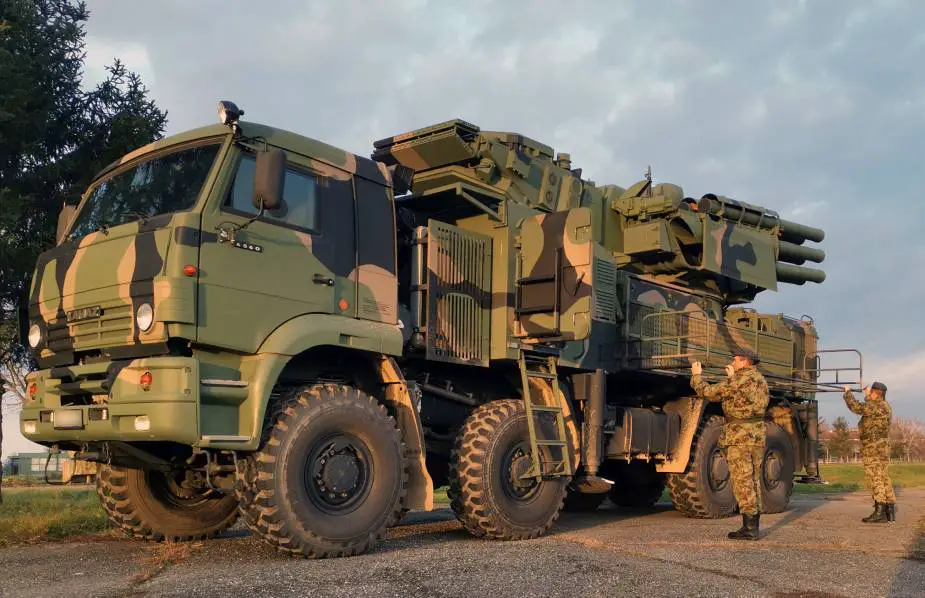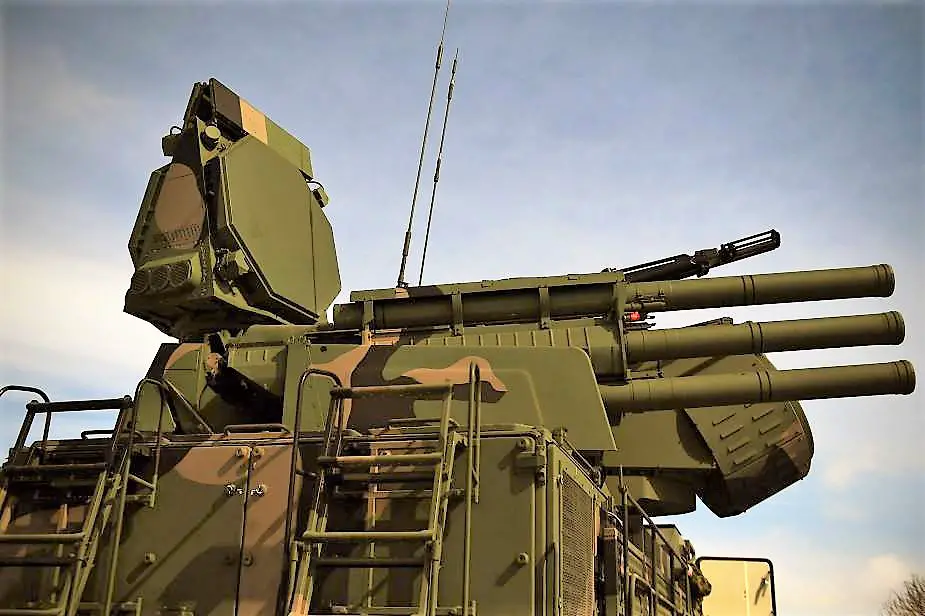Members of the battalion of the 250th Air Defence Rocket Brigade armed with artillery-missile air defense Pantsir-S1 systems are conducting intensive training in the defense of the airspace of the Republic of Serbia.
Follow Army Recognition on Google News at this link

The training includes the practice executed by crews concerning combat actions and basic technical maintenance of the Pantsir-S1 system (Picture source: Serbian MoD)
The training includes the practice executed by crews concerning combat actions and basic technical maintenance of the Pantsir-S1 system. The focus is placed on tactical exercises of combat crews of command and fighting vehicles, during which they practice procedures and test standardized actions for the emplacement of fire position, the transition of the system into various degrees of preparedness, replenishment of ammunition and rockets, and the efficiency of repairing possible failures and breaks.
The Pantsir-S1 air defense artillery-missile system has enhanced the firepower and maneuvering capabilities of the 250th Air Defence Rocket Brigade. Pantsir is produced by KBP Instrument Design Bureau of Tula, Russia, and is the successor to the Tunguska M1. The first finished version was completed in 1995 with the 1L36 radar, later another was designed. It is a short to medium-range ground-based air defence system, wheeled, tracked or stationary with two to three operators. Its air defense consists of automatic anti-aircraft guns and surface-to-air missiles with radar or optical target-tracking and radio-command guidance.
Its purpose is the protection of civil and military point and area targets, for motorized or mechanized troops up to regimental size or as a defensive asset of higher ranking air defense systems like S-300/S-400. The system has the capability for anti-munitions missions. It can hit targets on the waterline/above water. It can operate in a fully automatic mode. It has the ability to work in a completely passive mode. The probability of hitting a target for one missile is not less than 0.7 with a reaction time of 4–6 seconds. It can fire missiles and gun armament while in motion.
For its main radar station, early detection in height may be between 0–60° or 26–82° depending on the mode. The system is claimed to have significant advantages over other systems, such as Crotale NG (France), Roland-3 (France + Germany), Rapier 2000 (UK), SeaRAM (Germany + USA). This is not confirmed by comparative testing but clearly follows from the declared limit of possibilities of systems (2010). In 2013, there was a variant with two radar stations for early detection, standing back to back. The system has a modular structure which enables a fast and easy replacement of any part.
After receiving target coordinates (from any source) it may engage the target (using all the radar except the early detection radar) within a range from −5 to +85 (82) degrees (vertical). The interval between missile launches is 1–1.5 seconds (a world record for analog systems).
The S-400 Triumf and Pantsir missile system can be integrated into a two-layer defense system.

The Pantsir-S1 air defense artillery-missile system has enhanced the firepower and maneuvering capabilities of the 250th Air Defence Rocket Brigade. (Picture source: Serbian MoD)















